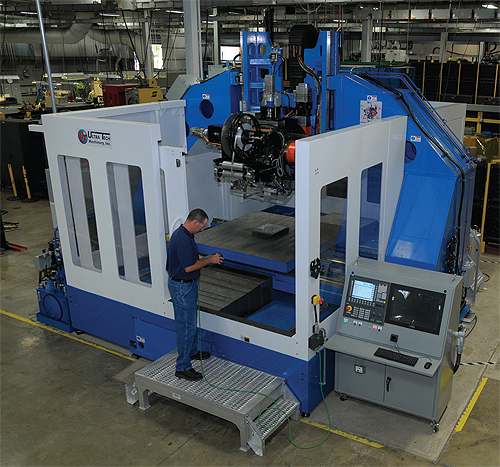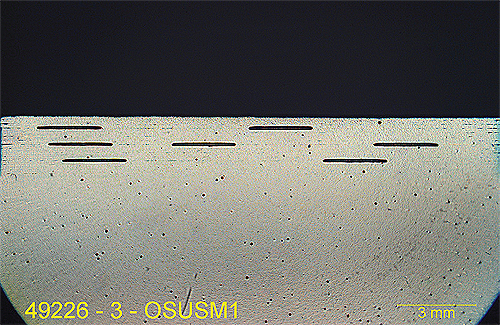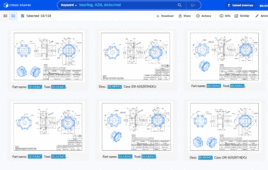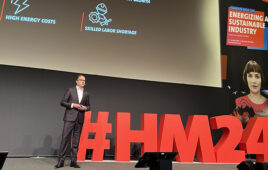A common problem with sensors is that they degrade over time because of corrosion, impact and wear. It would be better to house them in solid metal for protection and long operating life. However, conventional manufacturing technologies make such a process difficult. Using high temperatures in certain processes damages sensors. A new process, called ultrasonic additive manufacturing (UAM), can help house sensors in protective metal housings—without damage.

Ultrasonic additive manufacturing uses sound waves to merge layers of metal foil. A number of metal materials can be used, and the created bonds are fully dense. The process lets you embed sensors into additively built objects.
UAM is a solid-state 3D printing process for metals that uses sound waves to merge layers of metal foil. The process produces true metallurgical bonds with full density and works with a variety of metals, including aluminum, copper, stainless steel, and titanium. By combining additive and subtractive processes, UAM can create deep slots; hollow, latticed, honeycombed internal structures; and other complex geometries—geometries impossible to replicate with conventional subtractive manufacturing processes. Additionally, because the metals do not have to be heated for bonding, many electronics can be embedded without damage. This enables sensors, communication circuits and actuators to be embedded into fully dense metallic structures.

This photo shows the embedment of ‘sensor’ plastic strips in solid aluminum. The plastic has piezoelectric properties that produce a voltage when the plastic is stretched. This voltage can be used to measure the stress/strain in a metal part under load.
Many sensors such as thermocouples, pressure transducers, accelerometers, and strain sensors have been successfully integrated into UAM built components. For instance, fiber optic Bragg gratings have been embedded in aluminum parts for precise strain measurement. Similarly, traditional resistance strain gauges have been embedded to build structures with integrated health monitoring capabilities. Fluidic devices have been built with integrated valves, pressure transducers and check valves. Fiber optics and small diameter sensors/wires can also be encased potentially without machining.
Even though smart materials, such as piezoelectric, electrostrictive, magnetostrictive, shape memory alloys, and electroactive polymers can provide actuation, sensing and material property changes, these materials cannot be operated alone and must be integrated with structures and power electronics. The most common way to do this is by attaching the smart actuators and sensors onto the structure.
Embedding the smart materials into structures is a more desirable approach, but one that has not been fully developed because of the limitations of existing manufacturing processes. Fusion, sintering and bonded laminations have been attempted with limited success. The key challenge in joining smart materials using conventional welding techniques is that any melting greatly degrades the properties of the smart materials. Thus, typical construction of smart material devices relies on mechanical fastening. Since the UAM process is solid state, involving no melting, the process can be used to embed smart materials without doing any damage to the material. Wires, strips and foils have successfully been embedded in aluminum blocks through UAM. Composites with NiTi volume fractions up to 50% have been constructed using SonicLayer systems.
Here are a few applications with UAM embedding of shape memory alloy materials:
Reconfigurable Radio Frequency Antennas – By laminating a smart material to spring steel, one can develop a thin switch that can be easily embedded in a metal part. A network of such switches can overcome the narrow band limitation of existing antennae and realize a multiband/broadband aperture with a potential frequency bandwidth of 30:1 (100-3000 MHz).
Thermal Expansion – Most engineering materials expand when heated and contract when cooled. This physical property can be measured and is called the material’s coefficient of thermal expansion (CTE). In most applications the CTE has a negative effect on the operation of engineered structures: warped brake rotors, varying gaps in turbines, fatigue cracks, etc. Over certain temperature ranges, shape memory alloys act in the opposite direction and actually contract on heating. By embedding shape memory alloys in another metal, one can reduce the CTE of the overall structure.
Impact Detection – Prior work has demonstrated the ability to embed long strips of shape memory materials in a large metal block. By arranging an array of thin shape memory alloy strips, an active sensing plate can be easily constructed that can detect the location and magnitude of an impact on the structure.
Fabrisonic
www.fabrisonic.com
Filed Under: Digital manufacturing





Tell Us What You Think!